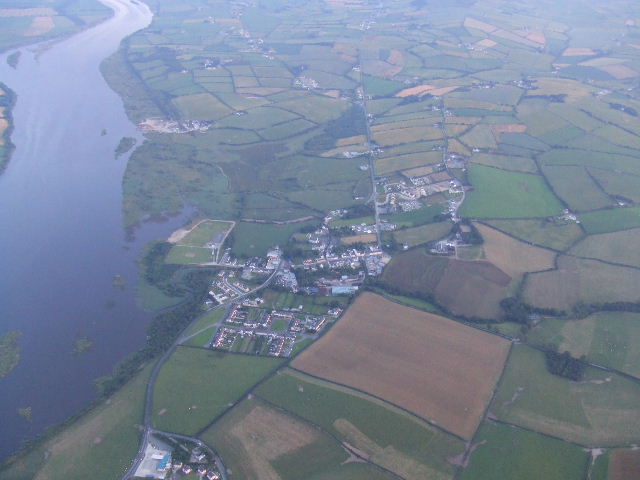|
Taughboyne
Taughboyne ( meaning "''house of Baithen''") is a civil parish, in County Donegal, Ireland. Taughboyne is located West-South-West from Derry, on the road to Raphoe; containing, with the village and ancient disfranchised borough of St Johnston, 6335 inhabitants (in 1837). St. Baithen, son of Brendan Brendan may refer to: People * Saint Brendan the Navigator (c. 484 – c. 577) was an Irish monastic saint. * Saint Brendan of Birr (died 573), Abbot of Birr in Co. Offaly, contemporaneous with the above * Brendan (given name), a masculine given na ..., a disciple and kinsman of St Columba, and his successor in the abbey of Hy, founded Tegbaothin in Tyrconnell: he flourished towards the close of the sixth century. The parish, according to the Ordnance survey, comprises an area of 15,773 statute acres, including a large portion of bog: the land is chiefly arable, and of good quality. There are some extensive slate quarries, but the slates are small and of a coarse quality. The ... [...More Info...] [...Related Items...] OR: [Wikipedia] [Google] [Baidu] |
Baithéne Mac Brénaind
Baithéne mac Brénaind (also known as Saint Baoithin and Saint Buadán) was an Irish monk, one of Saint Columba's followers who accompanied him to Scotland around 563, and was the first successor of the abbacy of Iona. The Annals of Tigernach record his birth in 534, and his death was likely between 596 and 598 according also to the Annals of Ulster. Irish genealogical records indicate him to be the "son of Brendan, son of Fergus, son of Conall Gulban, son of Niall Noígiallach", thus being a member of the Cenél Conaill branch of the Northern Uí Néill, as the abbots of Iona following the death of Columba often were. Baithéne is still venerated in Ireland, but is most heavily associated with county Donegal where his cult was most active in Taughboyne and Culdaff. Celebrations of the saint in Donegal are ongoing, and a major celebration of the saint's 1400th death anniversary was celebrated in the parish of Taughboyne in 2000. Folklore about the saint from Donegal furth ... [...More Info...] [...Related Items...] OR: [Wikipedia] [Google] [Baidu] |
St Johnston
St Johnston, officially Saint Johnstown ( ga, Baile Suingean), is a village, townland, and an electoral division in County Donegal, Ireland. It is in the Laggan district of East Donegal on the left bank of the River Foyle. It is in the civil parish of Taughboyne and barony of Raphoe North, on the R236 (Lifford– Newtowncunningham) road where it overlaps the R265 ( Carrigans–Raphoe) road. The village is about south of Derry. Architecture St Baithin's Church (popularly known as 'the Chapel'), the Catholic parish church in the village, was designed by E. W. Godwin, the mid- Victorian British architect. It is a neo-Gothic structure that was built between 1857 and 1860. St Johnston Presbyterian Church, located on the Derry Road, is the other main structure within the village. Parts of this church, or ''kirk'', may date to . However, most of the present neo-Gothic structure was built in the early nineteenth century. The 'thin' neo-Gothic tower was built in 1849. This church ... [...More Info...] [...Related Items...] OR: [Wikipedia] [Google] [Baidu] |
Provinces Of Ireland
There have been four Provinces of Ireland: Connacht (Connaught), Leinster, Munster, and Ulster. The Irish word for this territorial division, , meaning "fifth part", suggests that there were once five, and at times Meath has been considered to be the fifth province; in the medieval period, however, there were often more than five. The number of provinces and their delimitation fluctuated until 1610, when they were permanently set by the English administration of James I. The provinces of Ireland no longer serve administrative or political purposes but function as historical and cultural entities. Etymology In modern Irish the word for province is (pl. ). The modern Irish term derives from the Old Irish (pl. ) which literally meant "a fifth". This term appears in 8th-century law texts such as and in the legendary tales of the Ulster Cycle where it refers to the five kingdoms of the "Pentarchy". MacNeill enumerates the five earliest fifths mentioned, these comprising the ... [...More Info...] [...Related Items...] OR: [Wikipedia] [Google] [Baidu] |
Republic Of Ireland
Ireland ( ga, Éire ), also known as the Republic of Ireland (), is a country in north-western Europe consisting of 26 of the 32 Counties of Ireland, counties of the island of Ireland. The capital and largest city is Dublin, on the eastern side of the island. Around 2.1 million of the country's population of 5.13 million people resides in the Greater Dublin Area. The sovereign state shares its only land border with Northern Ireland, which is Countries of the United Kingdom, part of the United Kingdom. It is otherwise surrounded by the Atlantic Ocean, with the Celtic Sea to the south, St George's Channel to the south-east, and the Irish Sea to the east. It is a Unitary state, unitary, parliamentary republic. The legislature, the , consists of a lower house, ; an upper house, ; and an elected President of Ireland, President () who serves as the largely ceremonial head of state, but with some important powers and duties. The head of government is the (Prime Minister, liter ... [...More Info...] [...Related Items...] OR: [Wikipedia] [Google] [Baidu] |

